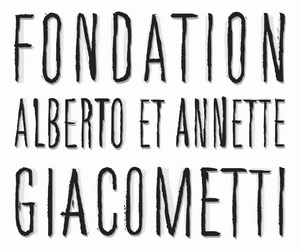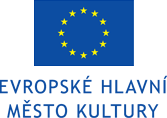The Trojan horse
October 21, 2011
In 2004 the police took an action which was supposed to avoid production and distribution of a false artwork. Mostly they were fakes of paintings from Jan Zrzavý, Václav Špála, Kamil Lhoták and others. This case was relatively widely published. It was caused by the uniqueness of the case, the amount of falsified pieces from important authors and the number of fakes in general. Also following court trial was popular not only within the collector’s comunity. Especially the painter-forger was atracting an attention of the public, not only by the relatively quality made fakes but also by his statements. He claimed, that the Jan Zrzavý’s spirit had been entering his body. This statement of the painter-forger was probably a part of the recent decision to examine his mental state. The criminals were found guilty on the 23rd of January 2008, but the final judgment was made on the 21st of September 2010. These criminals were sentenced to 7,5 and 2 years.This unique case shows that five years is not enough to make a final judgement. How many false pieces were made during those five years? Repression by the authorities active in the criminal proceedings is basically powerless. This is not a secret information leak. The forgers and the fake art dealers already know this and they act accordingly. Yet we look forward to the judgement of the appeal court. In the section Forgeries in Czech republic – actual list you can find some of the forgeries from this case. If any collector had purchased any paintings from the mentioned authors during that time or after, and has any doubts about the autenticity of the pieces, he can ask our association for advice. Sometimes it is enough to remove the frame and take a look at the periphery of a canvas´ frame and it´s clear.
In 2004 the police took an action which was supposed to avoid production and distribution of a false artwork. Mostly they were fakes of paintings from Jan Zrzavý, Václav Špála, Kamil Lhoták and others. This case was relatively widely published. It was caused by the uniqueness of the case, the amount of falsified pieces from important authors and the number of fakes in general. Also following court trial was popular not only within the collector’s comunity. Especially the painter-forger was atracting an attention of the public, not only by the relatively quality made fakes but also by his statements. He claimed, that the Jan Zrzavý’s spirit had been entering his body. This statement of the painter-forger was probably a part of the recent decision to examine his mental state. The criminals were found guilty on the 23rd of January 2008, but the final judgment was made on the 21st of September 2010. These criminals were sentenced to 7,5 and 2 years.This unique case shows that five years is not enough to make a final judgement. How many false pieces were made during those five years? Repression by the authorities active in the criminal proceedings is basically powerless. This is not a secret information leak. The forgers and the fake art dealers already know this and they act accordingly. Yet we look forward to the judgement of the appeal court. In the section Forgeries in Czech republic – actual list you can find some of the forgeries from this case. If any collector had purchased any paintings from the mentioned authors during that time or after, and has any doubts about the autenticity of the pieces, he can ask our association for advice. Sometimes it is enough to remove the frame and take a look at the periphery of a canvas´ frame and it´s clear.In 2004 the police took an action which was supposed to avoid production and distribution of a false artwork. Mostly they were fakes of paintings from Jan Zrzavý, Václav Špála, Kamil Lhoták and others. This case was relatively widely published. It was caused by the uniqueness of the case, the amount of falsified pieces from important authors and the number of fakes in general. Also following court trial was popular not only within the collector’s comunity. Especially the painter-forger was atracting an attention of the public, not only by the relatively quality made fakes but also by his statements. He claimed, that the Jan Zrzavý’s spirit had been entering his body. This statement of the painter-forger was probably a part of the recent decision to examine his mental state. The criminals were found guilty on the 23rd of January 2008, but the final judgment was made on the 21st of September 2010. These criminals were sentenced to 7,5 and 2 years.This unique case shows that five years is not enough to make a final judgement. How many false pieces were made during those five years? Repression by the authorities active in the criminal proceedings is basically powerless. This is not a secret information leak. The forgers and the fake art dealers already know this and they act accordingly. Yet we look forward to the judgement of the appeal court. In the section Forgeries in Czech republic – actual list you can find some of the forgeries from this case. If any collector had purchased any paintings from the mentioned authors during that time or after, and has any doubts about the autenticity of the pieces, he can ask our association for advice. Sometimes it is enough to remove the frame and take a look at the periphery of a canvas´ frame and it´s clear.In 2004 the police took an action which was supposed to avoid production and distribution of a false artwork. Mostly they were fakes of paintings from Jan Zrzavý, Václav Špála, Kamil Lhoták and others. This case was relatively widely published. It was caused by the uniqueness of the case, the amount of falsified pieces from important authors and the number of fakes in general. Also following court trial was popular not only within the collector’s comunity. Especially the painter-forger was atracting an attention of the public, not only by the relatively quality made fakes but also by his statements. He claimed, that the Jan Zrzavý’s spirit had been entering his body. This statement of the painter-forger was probably a part of the recent decision to examine his mental state. The criminals were found guilty on the 23rd of January 2008, but the final judgment was made on the 21st of September 2010. These criminals were sentenced to 7,5 and 2 years.This unique case shows that five years is not enough to make a final judgement. How many false pieces were made during those five years? Repression by the authorities active in the criminal proceedings is basically powerless. This is not a secret information leak. The forgers and the fake art dealers already know this and they act accordingly. Yet we look forward to the judgement of the appeal court. In the section Forgeries in Czech republic – actual list you can find some of the forgeries from this case. If any collector had purchased any paintings from the mentioned authors during that time or after, and has any doubts about the autenticity of the pieces, he can ask our association for advice. Sometimes it is enough to remove the frame and take a look at the periphery of a canvas´ frame and it´s clear.
Forgeries in Alšova galerie?
May 30, 2011
The Alšova Galerie exhibits the paintings of Natalia Goncharova. Unfortunately, there is a suspicion that most of the paintings are forgeries. The police started investigating this case after recieving a complaint. In the article we can find some interesting information about the functiononing of fraudulent art expert. The question is, under which conditions are those works exhibited in Czech Republic and what is the function of our curators. In this case, the curators serve only as „hangers" of delivered paintings. It would be interesting to find out how much was the insurance. It seems that the exhibition was insured for hundred millions czech crowns.
The paintings of Goncharova already left The Czech Republic. The criminal police arranged some expertises before the departure of paintings but they didn't prove any falsification. Considering the fact that the examined objects are already back at their owners, outside the scope of Czech law, we can be sure that the case won´t have any resolution. The important question is: What was the reason for an exhibion of this famous paintress just in České Budějovice? It may served to legalise and sell forgeries. Such practics appear and we must forsee them.









